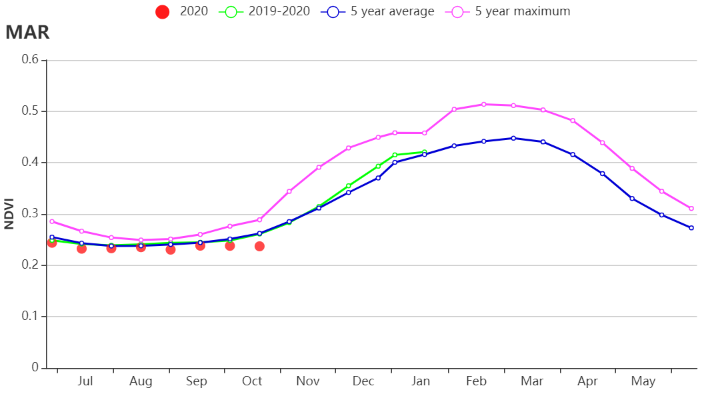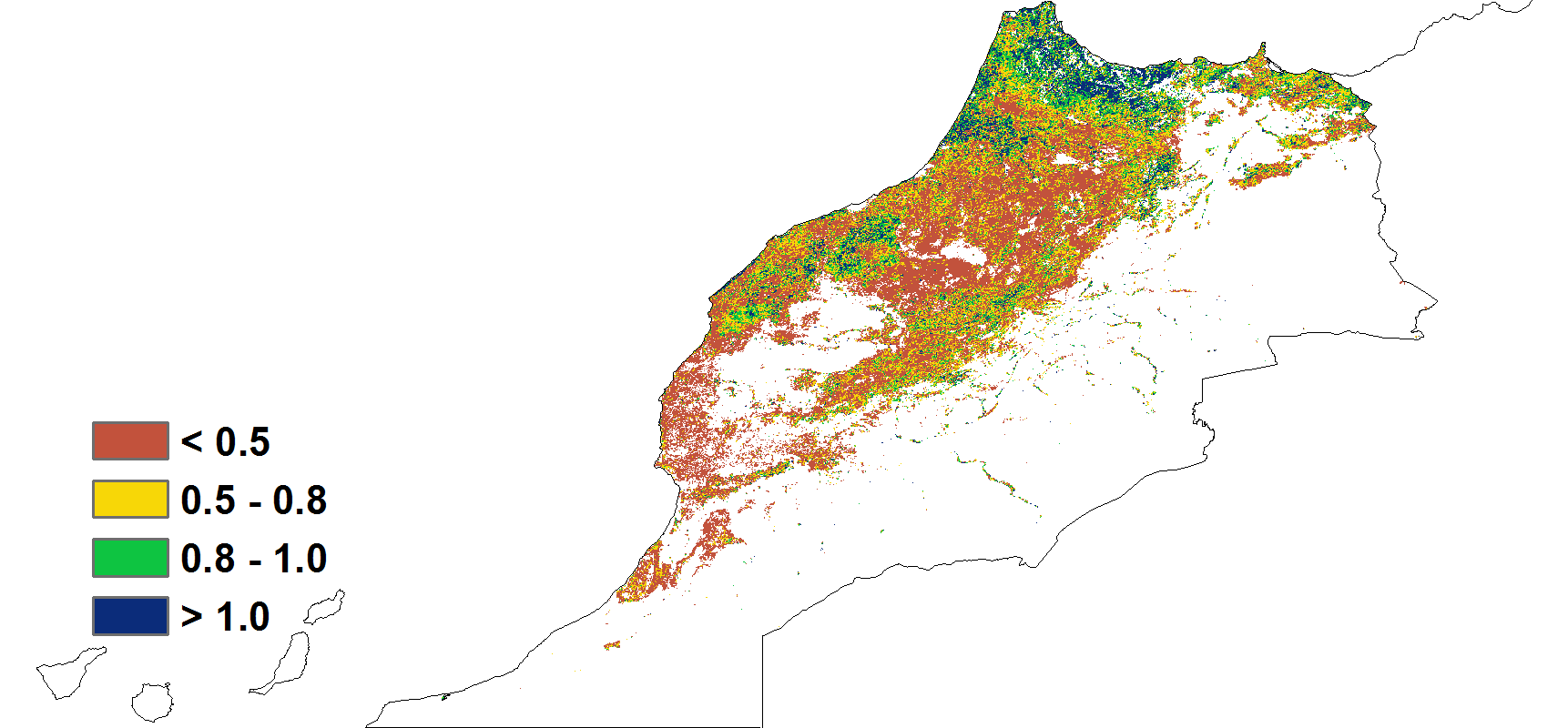除了在7月收获的玉米外,摩洛哥在此监测期内没有谷物作物的种植, 冬小麦在11月开始播种。 尽管大多数降雨是在11月至3月期间,但近几个月的降雨量一直低于平均水平。 累计降雨量为53毫米,与过去15年同期平均水平相比,降水量偏低39%。平均气温为23.1°C,偏高0.4°C,温度时间过程序列线显示,气温整体与平均水平持平。
区域分析
根据作物生产,CropWatch将摩洛哥划分为三个农业生态区(AEZs):半湿润的北部山区,温暖的半干旱区和温暖的半湿润区。与过去15年同期平均水平相比,三个农业生态区的光合有效辐射和潜在生物量均低于平均水平,分别偏低2%和5%, 1%和2%, 1%和 6% 。
在半湿润的北部山区和温暖的半湿润区,与过去15年同期平均水平相比,降水量分别偏低35%和39%,而平均气温与平均水平持平。 与近5年同期平均水平相比,耕地种植比例分别偏高11%和8%。 基于NDVI的作物生长过程线以及两个区域最佳植被状况指数(分别为0.62和0.61),两个农业生态区的作物长势处于平均水平。。
在温暖的半干旱区,与过去15年同期平均水平相比,降水量偏低42%,而平均气温偏高1°C。与近5年同期平均水平相比,耕地种植比例偏低13%。 基于NDVI的作物生长过程线显示,该区域作物长势低于平均水平。 最佳植被状况指数为0.42。
(b) 基于NDVI的作物生长过程线 (c) 最佳植被状况指数
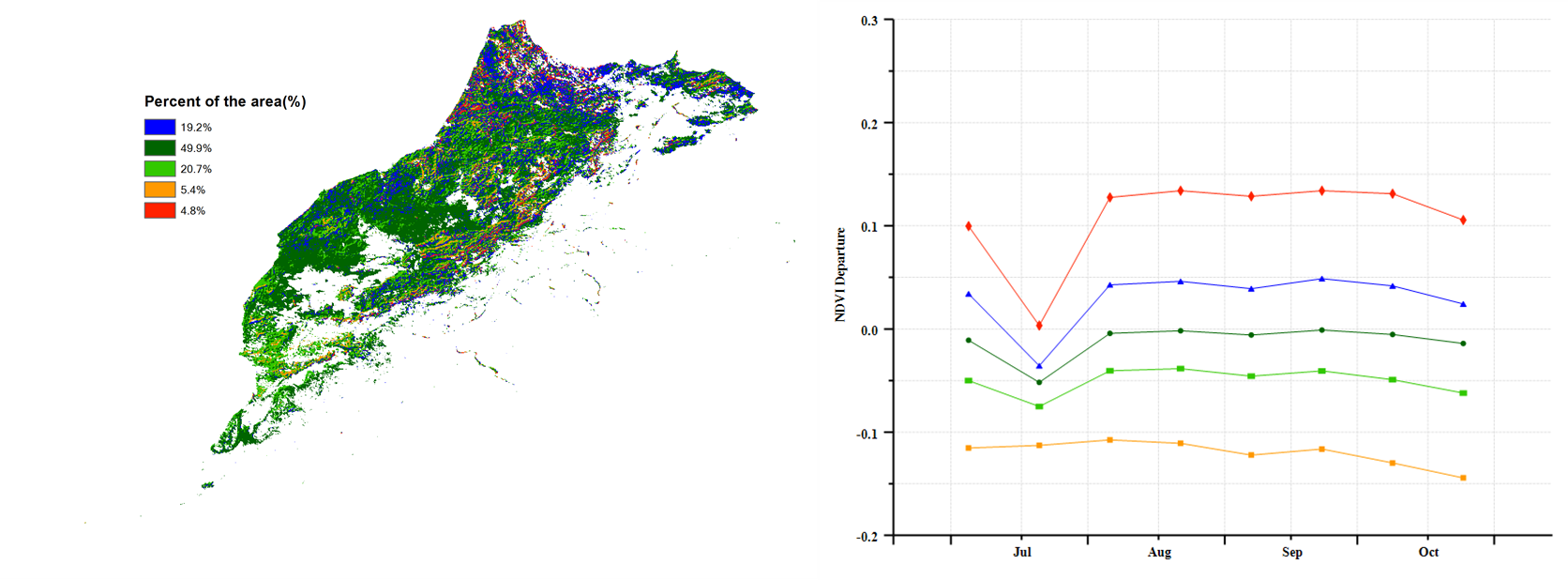
(d) NDVI距平空间聚类图(与5年平均相比) (e) NDVI距平聚类过程线
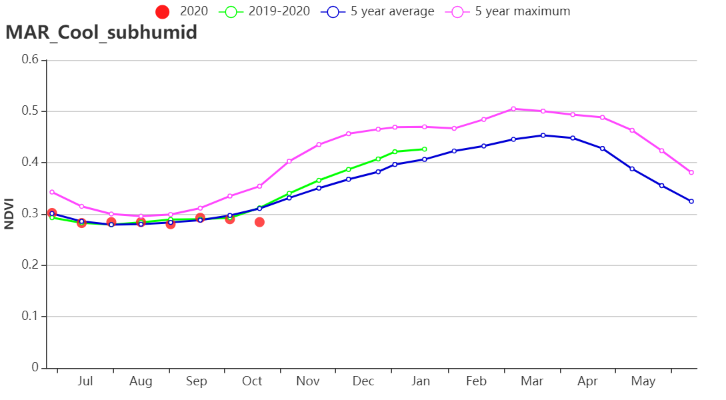
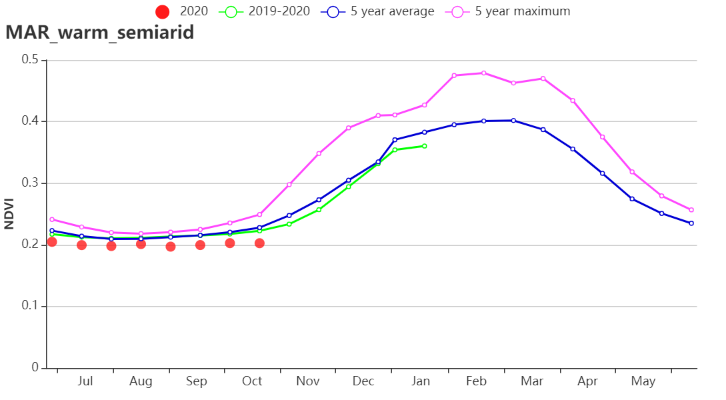
(f). 基于NDVI的作物生长过程线(寒冷半湿润地区(左)与温暖半干旱地区(右))
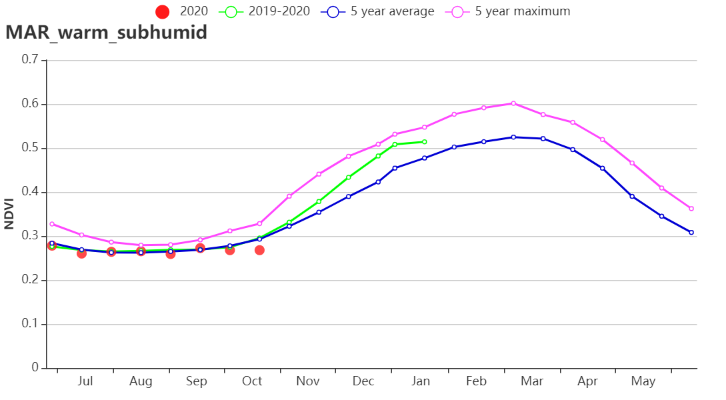
(h) . 基于NDVI的作物生长过程线(温暖半湿润地区)


(i) 降水时间序列过程线 (j)温度时间序列过程线
表3.47摩洛哥农业生态分区2020年7月-10月与过去15年(15YA)同期农业气象指标
累计降水 | 平均气温 | 光合有效辐射 | 潜在生物量 | |||||
区域 | 当前值(mm) | 距平 (%) | 当前值(°C) | 距平 (°C) | 当前值 (MJ/m2) | 距平 (%) | 当前值 (gDM/m2) | 距平 (%) |
半湿润的北部山区 | 68 | -35 | 23.0 | 0.0 | 1340 | -2 | 558 | -5 |
温暖的半干旱区 | 41 | -42 | 24.0 | 1.0 | 1355 | -1 | 587 | -2 |
温暖的半湿润区 | 61 | -39 | 23.0 | 0.0 | 1337 | -1 | 573 | -6 |
表3.48摩洛哥农业生态分区2020年7月-10月与近5年(5YA)同期农情指标
区域 | 耕地种植比例 | 复种指数 | 最佳植被状况指数 | ||
当前值(%) | 距平(%) | 当前值(%) | 距平(%) | 当前值 | |
半湿润的北部山区 | 19 | 11 | 105 | 1.16 | 0.62 |
温暖的半干旱区 | 2 | -13 | 101 | -0.59 | 0.42 |
温暖的半湿润区 | 14 | 8 | 102 | -1.16 | 0.61 |


